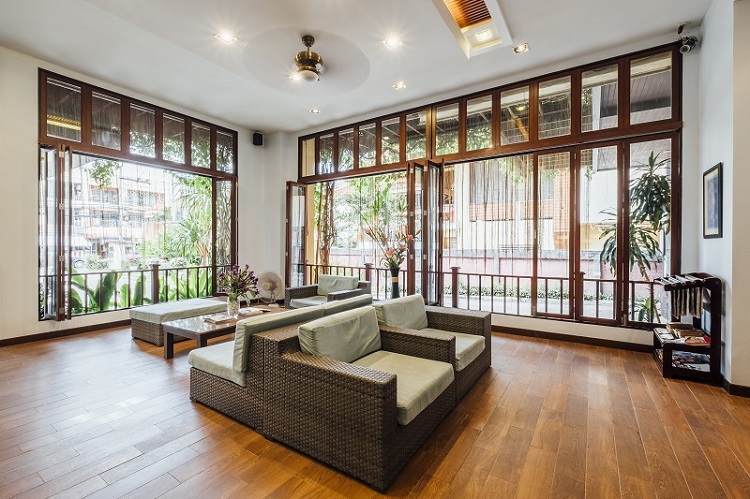An Overview Of Stretch Ceiling Lighting
December 09, 2022A common trend in stretch ceiling lighting is lightweight ceilings or stretch ceilings. Translucent material with a backlighting system makes it possible to produce diffuse, homogeneous, and calm interior lighting of several square meters. Sometimes people often complain about the excessive reflection of the light sources in the entire room. However, when you use a stretch ceiling lighting in your place, you can be assured of the fact that the lights would remain equally distributed throughout the room, behind the fabric and hence, would not stare back at you with glare all the time.
Stretch ceilings often use low or medium-brightness LEDs (5 to 50 lumens) mounted in strips or modules as a backlight source. Energy-efficient lights are a perfect choice as the expandable surface covers a large area.
The Following Article is an Overview Of Stretch Ceiling Lighting
Stretch Ceiling Lighting can be Customized with Unique Shapes and Even Translucent Patterns
As a result, they have far more potential than other lamps to affect the overall look of a space. From the lighting design perspective, we should supplement uniform lighting with spotlights or lamps that can draw attention to particular places or things. An effective stretch ceiling presents a particular set of design and installation difficulties, which we will discuss in this article.
Choose a Transparent Stretch Ceiling with a High Light Transmission Rate
Stretch ceiling lighting uses translucent materials to hide LED light sources, so it's important to consider how much light they transmit. We recommend a light transmission rate of at least 50% for smooth white ceilings.
If you have to choose between several manufacturers, you should consider installing the material with the highest transmission since this value has a significant impact on the installation and maintenance costs of the stretch ceiling.
The light transmission rate must be considered when choosing a light source. For example, if you need 5000 lumens for a living room of 20 square meters, then the luminous flux of LEDs behind a translucent material with a ratio of 50% should be 10000 Lm.
Determine the ideal spacing between the stretch ceiling and the LEDs
A stretch ceiling lighting should be evenly illuminated without hot spots and dark spots; this consistency is what makes this lighting technique so appealing. To do this, the LEDs must be placed under a translucent material at an equal distance.
The distance between each LED strip or module should be the same as the distance between the LED and the stretch ceiling because most LEDs have a lighting angle of 120 degrees. For some simple LEDs with a 180-degree angle, the distance-to-object ratio should be 1.5.
We recommend keeping a minimum of 30cm and a maximum of 50cm between light sources and translucent material for best effects. Although a lower value is possible, uniformity would require the use of many more LEDs, which would substantially impact installation and operating costs.
The distance between light sources, such as rows of LED strips or individual backlight modules, should be 120 degrees for a depth of 30 cm. 270-degree viewing angle: 30cm, 45cm
Use Energy-Efficient Lighting
 |
| Stretch Ceiling Lighting |
In order for the stretch ceiling to give the highest luminous flux with the lowest power consumption, choose LED modules or strips with a high energy efficiency of at least 100 lm / W.
Select an LED Light Source with the Correct Number of LEDs and Light Output
Stretch ceiling lighting can serve various purposes, including task, ambient, general, and workplace lighting. It can also be used to direct traffic, highlight specific areas, or convey a particular design trend.
Easy Installation is Essential for Any LED Backlight Strip or Module
Stretch ceiling lighting requires a lot of LEDs, so they must be easy to install and use, with a minimum of supporting components such as wires, connectors, screws, or transformers. Since they are as easy to install as LED strips, we recommend using square or rectangular LED modules at least 25 cm wide for large areas.
Use LED Modules or Strips with the Best Light Output, Color Rendering, and Spectrum
If the stretch ceiling lighting is intended to provide general lighting, we advise using light sources with a high-quality spectrum and a CRI of at least 90. Currently, full spectrum LED technology such as Nichia Optisolis (CRI98+) and Seoul Semiconductor SunLike (CRI97+), with nearly day-like spectrums and maximum scores for all CRI test colors, provides the best quality of light for LEDs.
Conclusion
Stretch ceiling lighting is very beneficial. This article is for you if you want an overview of stretch ceiling lighting.




0 comments